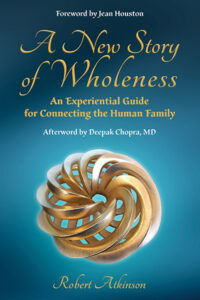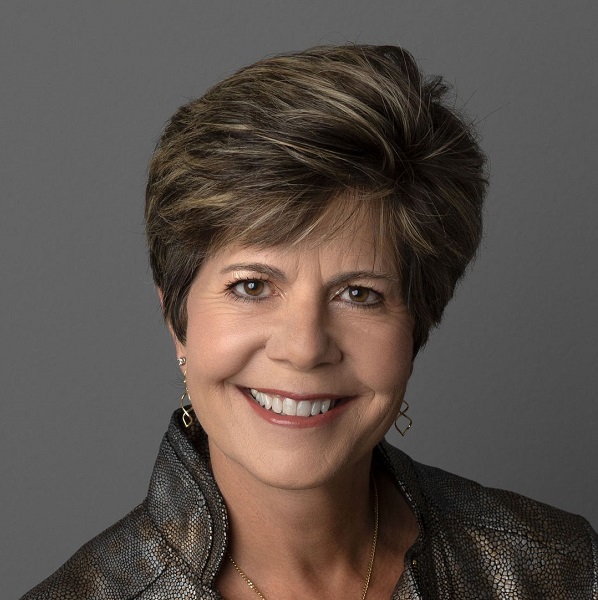In a holistic view of reality, with everything dependent upon what Teilhard de Chardin called a “single energy at play in the world,” all things would be so interdependent that apparent opposites—like yin and yang, feminine and masculine—are seen as complementary, interrelated halves of the same whole, balancing, integrating, uniting, and transcending their own presumed duality.
Lao Tzu called this wholeness of existence the “nameless,” which is all there was at “the beginning of heaven and earth.” In this original wholeness, all things are revered, in harmony with all other things, without divisions, and in perfect relationship.
All existence was intended to remain forever whole. However, adding intrigue to mystery, the evolution of existence took a detour in the Garden of Eden with the eating of the forbidden fruit. And, in another version of this narrative, in Greek mythology, with the opening of Pandora’s Box.
These narratives are not only about asserting our individual will over a greater will, which brought forth an archetype that introduced separation and opposition into the world. They also signal humanity’s fall from wholeness.
The separation of the “named” from the “nameless,” the temporal from the eternal, fragmented the “named” into “ten thousand things,” as Lao Tzu noted, and broke the Whole into pieces.
Yet, there is a hidden thread of wholeness that connects us all, that helps us remember where we came from, who we are, and where we are going.
Imagine a world in which the explicit purpose of life is to realize the wholeness of the entire creation, to serve the good of the whole, to live our lives in wonderment of and in harmony with that whole.
This is the world that many mystic traditions and mindfulness practices seek, a state of consciousness central to Indigenous wisdom traditions, and a unifying field of awareness available to all.
One expression of this wholeness is in the surah from the Quran (2:156), with variations in many sacred traditions, “We all come from God and unto Him do we return.” This is often recited when a loved one dies but is much more than showing patience in God’s supreme power.
On a mystical level, this saying encourages a non-dual awareness within a duality-dominated world by assuring us of a return to wholeness. At the same time, it gives us a hint of the process that moves us toward this underlying wholeness.
This mystic return to our Source of being suggests a structure for living a life of purpose and meaning within a pattern framed by a process of knowing, forgetting, and remembering.
Several sacred traditions have legends that we innately know we have come from wholeness, but we are born into a realm that eventually causes us to forget what we once knew, and we spend our lives in search of what will enable us to remember the wholeness we once knew.
Since our consciousness originates in unity, this is where our search leads us back to. Remembrance gets us in touch with our soul, the source of that knowing, and is at the heart of all spiritual practice, to remind us of our changeless nature.
Remembrance is a meditation creating gratitude, awakening us to a lasting reality. It brings us back to the awareness of our eternal identity and who we really are at our essence; knowing our true identity is the key to living in wholeness.
Our quest for wholeness culminates in remembering our wholeness. This already exists, but we need a process designed to bring us back to this wholeness. The separation we experience here is based on a limited reading of reality. The illusion of separation comes into play because we tend to focus on temporal expressions of who we think we, or others, are, rather than on the lasting forms of existence.
Yet, all perceived differences can become catalysts for our own spiritual growth, as life’s difficulties, struggles, and challenges contribute most to meaning making, pattern shaping, and rediscovering who we are.
Our return to our original state of wholeness occurs as we experience a pattern of archetypal (universally human) circumstances designed to expand and focus our consciousness on this inherent wholeness.
Life as a mystic journey—a quest for the union of opposites—results in an abiding love within which we live our lives in wonderment of wholeness. The journey to uncover a hidden wholeness within us leads to this all-embracing unity of the whole.
As we live our lives consciously and deliberately, universal motifs and archetypes making up a timeless pattern emerge, through which we discover not only who we are but also why we are deeply connected to all others.
A dapted from A New Story of Wholeness: An Experiential Guide for Connecting the Human Family by Robert Atkinson (2022)
dapted from A New Story of Wholeness: An Experiential Guide for Connecting the Human Family by Robert Atkinson (2022)
Robert Atkinson, Ph.D., an award winning author and member of the Evolutionary Leaders Circle, is an internationally recognized authority on life story interviewing, personal mythmaking, and soul-making. He is the author of A New Story of Wholeness: An Experiential Guide for Connecting the Human Family, co-editor of Our Moment of Choice: Evolutionary Visions and Hope for the Future (2020), and the author of The Story of Our Time: From Duality to Interconnectedness to Oneness is a 2017 Nautilus Book Award winner. www.RobertAtkinson.net








